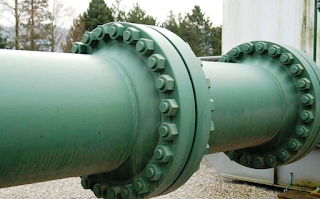ASME Flange Ratings and Flange Classes
Flanges are a pipe fitting whose function is to join two pieces in a piping system, and easily separate them at a particular time, allowing to be disassembled without destructive operations. By function and utility, the flanges are present in many sectors and areas such as construction and industry and a lot of application in oil and gas sector .
It's possible to produce standard flanges as ASA/ANSI/ASME (USA), PN/DIN (European), BS10 (British/Australian), and JIS/KS (Japanese/Korean). And usually these standards are not interchangeable. I have tried to simplify some of the terms as used by ASME and ANSI for a better understanding .
Definition of Pressure-Temperature Rating
Pressure- temperature rating is the maximum allowable non-shock gauge pressure at the specific temperature for a given material as covered in ASME B16. for Pipe Flanges and Flanged Fittings that covers flanges sizes from NPS ½" to 24".
What is Temperature Rating?
The ability of a material to handle the stresses at a given temperature as detailed in ASME B31.3 . It is worth noting that different material can handle different amounts of stress at different temperatures.
What is Pressure Rating?
The pressure rating is safe working or maximum operating pressure with respect to the working temperature. It depends on the materials' Stress-Strain characteristics. It is available in different Codes and Standards.
What is Flange Class?
Many of the flanges in each standard are divided into "pressure classes", depending on the different rates of pressure that are able to endure. The most common flanges pressure classes are #150, #300, #600, #900, #1500, #2500 and #3000 according to ASME designation. To other standards, as DIN, pressure classes are defined by the acronym PN, as for example, PN10, PN16, PN20, PN25, PN40, PN50, PN100, PN150, PN250 or PN420. Flanges from different pressure classes are not usually interchangeable.
A pipe flange connects piping and components in a piping system by use of bolted connections and gaskets



